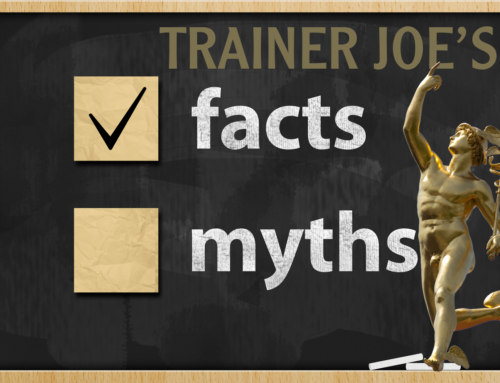On December 30, 1963, President Johnson signed Proclamation 3566, which established February 1964 as the first “American Heart Month.” Every year since, the current President has proclaimed the same thing.
The importance of having a month dedicated to heart health awareness cannot be overstated. Nearly a million Americans will die of cardiovascular disease each year, vastly exceeding any other cause. Cardiovascular disease includes heart attack, stroke, hypertension, coronary artery disease and peripheral vascular disease.
Research indicates that seventy percent of all premature deaths are preventable as they are based on lifestyle, while thirty percent of all outcomes are based on genetics. Since you can’t change your ancestors, let’s look at what you can do. Presented below are my Top Seven Healthy Heart Hacks:
1: Get A Physical
If two or more years have passed and you haven’t had a physical, it’s time to meet with your doctor (especially if you’re over 40.) Knowing and managing your heart-related vital statistics are critical to understanding the actions you must take to reduce your risk factors. Guidelines are constantly being revised, so this information is not a substitute for talking with your physician.
2: Stop Smoking
Need I repeat what we have all heard before? Tobacco accelerates your heart rate while hardening your arteries thus constricting blood vessels. This threat conspires to raise your blood pressure. See your doctor for determining the best way to kick the habit. By the way, vaping is not a safe alternative as the nicotine is a vasoconstrictor and can lead to hardening of the arteries and complications during pregnancy.
3: Reduce Your Intake of Saturated and Trans Fats
Never has a three-letter macronutrient been so maligned. Like its cousin, the four-letter “Carb,” there are good ones and bad ones in each family. There are four kinds of fats: Saturated, polyunsaturated, monounsaturated and trans fatty acid. Saturated fats and trans fats raise blood cholesterol levels. According to an AHA Scientific Position, an increase in dietary cholesterol in the blood is a major risk factor for strokes and heart attacks. Calories from saturated fat should not exceed seven percent of daily caloric intake. Trans fats should provide less than one percent of one’s caloric intake. Saturated fats are found most often in cheese, ice cream, lard, butter, and meats. Trans fats are sneaky, as they are often baked into foods like cookies, donuts and cakes.
4: Eat More Fish
There is a ton of published research suggesting the omega-3 fatty acids contained in fish may reduce the risk of developing heart disease. The high protein content, selenium and vitamin D also provide healthful benefits. Sardines, salmon and herring, among other fish contain high levels of omega-3. A report published in the Journal of the American Medical Association stated, “Eating fish reduces the risk of death from heart disease, the leading cause of death in both men and women. Fish intake has also been linked to a lower risk of stroke, depression, and mental decline with age.”
5: Exercise
Your heart is a muscle. Cardiovascular exercise increases the strength of the heart, allowing it to pump more blood with each beat. It’s this increased blood flow that carries more oxygen throughout the body. While coursing through your body, the oxygen-rich blood acts like scrubbing bubbles to scrape the build-up of plaque on artery walls. Since your heart is becoming stronger as a result of exercise, it will not have to beat as many times while it is at rest, thus lowering your resting pulse rate and saving beats over the course of your lifetime. It is also important to do strength training exercises. Stronger legs will allow you to run, walk or bike for longer periods and do so at a higher level of intensity. Stronger shoulders, back and core will help with swimming, rowing and a wide array of sports and functional activities.
6: Reduce Salt Intake
Excess salt causes a buildup of fluids in your body, making your heart work harder to pump blood. Many experts recommend a daily maximum of 2400 mg of sodium, the equivalent of one teaspoon, less for people with hypertension. Some foods considered safe contain more salt than you might expect. Read food labels carefully: canned soups and vegetables, breakfast cereals, crackers and lunchmeats are all suspect. Many fried fast foods such as chicken, burgers and French fries can have nearly a day’s supply of salt in one meal.
6: Get Lots of Fiber
Consuming a high fiber diet that includes at least a combined daily five servings of fruits and vegetables can lower bad cholesterol and raise the good. By the way, there are two types of fiber, soluble and insoluble. Both are needed in your diet. Foods rich in soluble fiber include oatmeal, peas, barley, apples, beans and rice bran. Foods high in insoluble (often called dietary) fiber include, prunes, wheat bran, brown rice, turnips, cauliflower, beets and Brussels sprouts.
The American Dietetic Association recommends a minimum of 20-35 grams per day for a healthy adult depending on calorie intake and weight. A 2000 calorie per day diet should include about 25 grams of fiber per day. The way to know how much fiber you are getting each day is to carefully read food labels when you are shopping.
You may never sit in the Oval Office signing proclamations, but that shouldn’t stop you from proclaiming your freedom from heart disease. My research indicates that the above seven healthy heart hacks represent the greatest levers of positive change. I’d love to know if you think I omitted something. What do you do to keep your heart ticking like a Rolex?
Best wishes for a healthy Valentine’s Day,
Joe







A good friend asked that I add: “Great list! Should we add a spiritual component? Meditation, prayer, or even therapeutic massage?”
I agree, and the next time I will include this. Thanks for your insight!